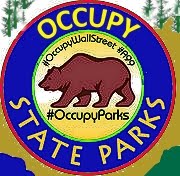LA COUNTY STATEMENT ON BALL/FRISBEE-THROWING ORDINANCE
LOS ANGELES COUNTY DEPARTMENT OF BEACHES AND HARBORS
OVERVIEW:
The new ordinance lifts a decades-old, all-out ban on playing football, Frisbee and other ball on the beach. Its intention was not to preclude football or Frisbee tossing.
Rather, its purpose is to allow ball playing, while providing reasonable safety measures that lifeguards may impose on a crowded beach day, when wayward footballs or Frisbees could cause injuries to bystanders.
The ordinance allows football play, Frisbee and other ball play during the off-peak beach season.
In the summer months, when millions of visitors come to L.A. County beaches, lifeguards have the
authority to stop a game if it threatens safety in crowded areas of the beach. If necessary, a
citation may be issued by law enforcement or Department Code Enforcement Officers to
individuals who ignore the lifeguards’directives on ball playing.
Even during the peak season, the rule does allow for games in specially designated parts of the
beach.
SUMMARY OF ORDINANCE:
The newly revised Beach Ordinance does not ban footballs, soccer balls, or Frisbees on L.A.
County beaches. Instead, the Ordinance provides a set of guidelines for safe ball playing at the
beach.
Beachgoers may throw, kick, or roll any ball or light object on L.A. County beaches during the offpeak season between Labor Day and Memorial Day as long as persons or property are not
endangered, and may do so year-round in established and/or designated areas or if they receive
permission from the Department of Beaches and Harbors or a lifeguard.
VIOLATION:
If the ball-playing code section is violated, the violation is an infraction punishable by a fine in
accordance with California Government Code section 25132 as follows:
(b) “Every violation determined to be an infraction is punishable by (1) a fine not exceeding
one hundred dollars ($100) for a first violation; (2) a fine not exceeding two hundred dollars
($200) for a second violation of the same ordinance within one year; (3) a fine not
exceeding five hundred dollars ($500) for each additional violation of the same ordinance
within one year.”
Additional related LA County Media Releases:
MuniCode update 1/24/12 http://is.gd/UMyrxG
Analysis http://is.gd/Osq0KA (CBS)
Media Contact: Carol Baker
Phone: (310) 305-9562
Cell: (310) 947-1679
February 9, 2012 CBaker@bh.lacounty.gov
Phone: (310) 305-9562
Cell: (310) 947-1679
February 9, 2012 CBaker@bh.lacounty.gov
Twitter @OccupyCalParks

